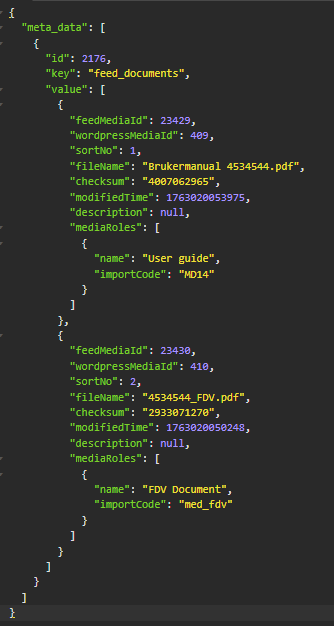WooHoo - feed® WooCommerce module
With feed®'s WooCommerce module, you can set up automated integrations from feed® to your websites and online stores.
To get access to the feed® WooCommerce module, please contact salg@isys.no or call 33 03 60 60.
How does the module work in feed® ?
Important note
For image uploads to work from feed® to WooCommerce, access to the WordPress API is required. Assuming you have WordPress version 5.6 or newer, we recommend giving feed® access using "application passwords" in WordPress.
For more information on how to set this up in WordPress, see: https://make.wordpress.org/core/2020/11/05/application-passwords-integration-guide/ (If you're running WordPress 5.6 or newer and using the Basic-Auth plugin, we recommend replacing it with application passwords instead)
Alternatively, and for older versions of WordPress, you may need to use a plugin for Basic Auth. This must then be installed for the WordPress that WooCommerce runs on. https://github.com/WP-API/Basic-Auth The feed® WordPress user set up in the configuration must have the role "Author" (or a role with equivalent or more access)
The feed® WooCommerce module requires v3 of the WooCommerce API. This means WooCommerce 3.5.x or newer and WordPress 4.4 or newer.
Important note regarding synchronization of base/variant products
If you are to use base/variant products in your synchronization to WooCommerce as variable products, feed should be set as the master for product creation in WooCommerce.
If ERP is set as the master and create products in WooCommerce as Simple products, while the WooCommerce module sends the same products as variants under a Variable product, WooCommerce will issue error messages back to feed since WooCommerce does not allow conversion between product types.
If feed is master, and ERP updates the products, the correct product type is created, and you will avoid error messages.
Don not set products as visible until stock levels and pricing are available from ERP.
Step-by-step procedure:
- Obtain access to the Woocommerce module for your feed® installation via salg@isys.no / 33 03 60 60
- Create a new WooCommerce structure to define categories and products to be sent to WooCommerce.
- Create a WooCommerce configuration and set up necessary parameters for access to WooCommerce and select the desired structure to be exported
- Ensure that the desired categories and product attributes to be used are created in WooCommerce.
- Create data mapping for your WooCommerce configuration
- Product data
- Product images
- Categories
- Relations
- Product attributes
- Base / Variant
- Variant filter
- Metadata If you use WooCommerce plugins that expect specific metadata fields in Woo with data from feed®, you can create these here and link data fields from feed®.
- Custom product attributes
- Test export by going to the structure and manually exporting to the desired WooCommerce configuration by pressing the icon shaped like an arrow with a line underneath. If you have linked the structure to multiple WooCommerce configurations, you will need to choose which configuration/WooCommerce to synchronize to.
The top node will synchronize all products located in all nodes.
Sub node exports all products in the node (folder)
Export can also be run from a single product if desired. This is practical if you want to test, or need to push out an important update on a single product. For a single product, you must click on the 3 dots to the right of the product in the structure and select Export to WooCommerce (and choose the configuration to be used).
feed® WooCommerce mapping
feed® WooCommerce config
Documents in WooCommerce
PS: The functionality below describes document transfer via the WooModule, but it requires development on the recipient’s side for documents to be displayed on the product template in WooCommerce.
The WooCommerce API does not support documents directly in the same way it does for images.
WordPress supports uploading documents to WordPress, but WooCommerce products do not have any standard method for attaching documents.
The feed® WooModule has the ability to attach documents if you go to the “Product Documents” tab and select the media roles from which you want the integration to fetch documents in feed.
The metadata field “feed_documents” will then be populated with all necessary data so that an integration can display or link to the WordPress document on the product.
Below is an example of the JSON that a WooCommerce developer will receive when “Product Documents” is used in the WooModule. The developer must then add support in the WooCommerce template to display the documents in the desired way.
The field “wordpressMediaId” contains the ID of the media stored in WordPress, while “mediaRoles” describes which roles the media has for the product. The metadata field may, for example, look like this:




